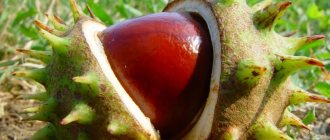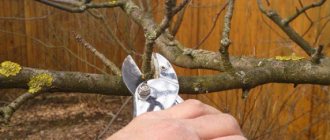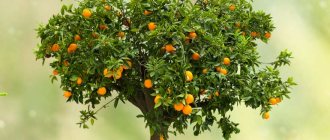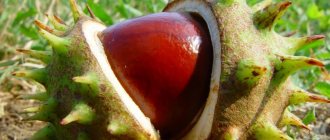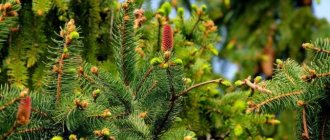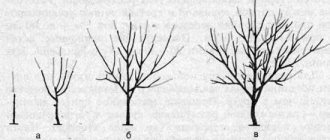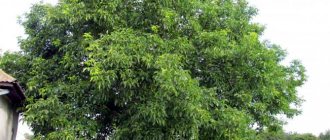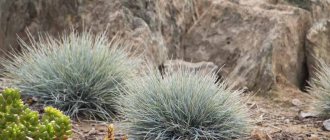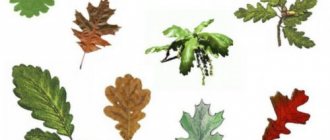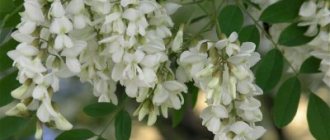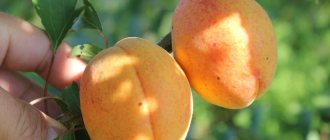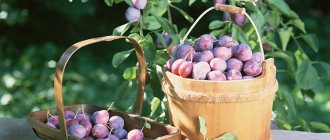Chestnut is an amazing tree, and every nation has its own associations with it. For every Frenchman, the mention of chestnuts brings back pleasant memories of autumn France, where the “chestnut season” begins in October. It is hypothetically impossible to visit France in October and not try roasted chestnuts, since at this time the air is literally saturated with the aroma of “chestnut cooking”: chestnuts and dishes based on them are served not only in every cafe and restaurant, but are also sold in every crossroads
The chestnut tree is especially beautiful in May, during flowering. At one time, horse chestnut was chosen as the main tree for landscaping Kyiv, and in the spring, from a bird's eye view, Kyiv, drowning in chestnut blossoms, looks amazing.
In Bulgaria, where the development of traditional medicine is supported at the state level, chestnut is valued for its enormous healing power. In horse chestnut, not only the juice of its flowers is healing, but also the wood and the brown shell of the fruit.
Growing chestnut from seeds
Chestnut (edible, noble) comes from the subtropics, so it is critical of the quality of the soil and air humidity. The tree does not tolerate frost, so cultivating this type of chestnut in open ground is problematic. But many amateurs have adapted to growing chestnut seedlings in “winter gardens” or in indoor cultivation using bonsai technology.
You can grow edible chestnuts from seeds, but you need to know some subtleties. The main rule for successful germination of chestnut nuts is long-term (up to six months) stratification. The stratification technique imitates the passage of a natural physiological process, for which the seeds are sprinkled with dry sand and placed on the bottom shelf of the refrigerator. After 5 - 6 months, stratified chestnut seeds are ready for germination.
A mixture of forest soil and humus in equal proportions is prepared as a substrate. For every 50 cubic meters cm of prepared soil, half a kilogram of dolomite flour is added. A similar soil composition is required for tree cultivation.
Chestnut seeds are very large, so they are planted to a depth of about 10 cm. It is advisable to sow chestnut nuts immediately into individual containers with a volume of at least 5 liters. Before sowing, it is advisable to keep them in warm water (5 days). Stratified seeds germinate quickly, and further plant care is not difficult.
How to plant a chestnut tree
Planting a chestnut tree is a simple matter, but you should take into account the condition of the soil on the site. If the soil composition is unfavorable for this tree, the planting site is first prepared: a hole is dug and filled with a mixture of three parts turf soil, two parts humus and one part sand.
Horse chestnut fruits are a valuable raw material for the preparation of medicines
The best time for planting is considered to be autumn or early spring; it is not recommended to shift these dates, because there is a possibility that the seedling will not have time to take root.
Horse chestnut is widely used in park landscapes
Three-year-old and slightly older specimens are excellent planting material.
Work order:
- Dig a hole more than half a meter deep and wide.
- Humus and a glass of superphosphate are added to the soil. Excessively acidic reaction of the soil composition is neutralized with dolomite flour.
- Chestnut roots cannot tolerate waterlogging, so for good drainage, the bottom of the ditch is covered with a layer of about 15 cm, consisting of sand with the addition of small crushed stone.
- When planting, the root collar is placed at ground level.
- To prevent subsidence of the root collar, the hole is not only tightly filled with a nutritious soil mixture, but also a small mound is made around the trunk.
- Each seedling is watered with 3-4 buckets of warm water. After planting, practice daily watering.
- For better rooting, the seedling is tied to a support. The support can be removed once the chestnut tree has taken root and the tree can withstand the winds.
Growing horse chestnut from seeds
Horse chestnut is successfully cultivated in various climatic conditions, therefore it is more attractive from the point of view of landscape design. The technology for growing chestnuts from seeds was specially developed at the Kiev Botanical Garden and is easily adaptable to home conditions.
Just as in the case of edible chestnut, the seeds need to be stratified, that is, sprinkled with sand (wet) and kept in a cold place (the bottom shelf of the refrigerator or cellar). Natural stratification of chestnut seeds occurs in the layer of fallen leaves. If you collect the seeds in late autumn, then such seed can be sown in 2 - 3 months without artificial stratification. In any case, before sowing, the seeds must be soaked in warm water for five days, changing the water periodically. This technique promotes the breakdown and leaching of germination inhibitors (blockers) and ensures softening of the outer shell.
Prepared horse chestnut seeds can be sown directly into the soil in early spring, planted to a depth of up to 10 cm. Direct sowing in a permanent place ensures the development of a tap root system that penetrates deep into the soil, which creates favorable conditions for water supply to the tree. On the other hand, when the main root is shortened by 1/3, a powerful superficial root system develops, located in the fertile soil layer, which has a positive effect on the plant nutrition regime.
Horse chestnuts and seed chestnuts are radically different in “character”, but each of them is worthy of your attention.
What could be more beautiful than lush chestnut blossoms, consisting of many white candles in spring? Lovers of the beauty of nature, as well as people who recognize a healthy lifestyle, should definitely have this wonderful tree in their garden. Chestnut fruits are used both for food and for treatment with folk remedies - it all depends on the variety of the tree. It is widely used for landscaping gardens, squares and parks, since chestnut is highly decorative regardless of the time of year.
Chestnut is called the “sunny tree” because its fruits literally absorb the energy of the sun. Trees prefer to grow in open places. Those who want to plant this tree need to know how to care for chestnuts at different times of the year.
Propagation by seeds
Growing chestnuts from nuts is discussed on forums. This is a difficult, but accessible and educational method of getting a new tree in your garden.
When growing seedlings from nuts, to increase the effectiveness of the event, you need to plant at least 5–10 pieces at a time. There is always the possibility of planting immature or damaged nuts that will not produce normal sprouts.
To protect a young tree from insects, it is prophylactically treated with antiparasitic drugs.
A valuable feature of seeded chestnut is its edible fruits.
The most interesting tips are:
- Plant nuts in flower beds, for example, next to tulips. In this case, dry grass is laid in several layers in the grooves, and covered with earth on top.
- Spraying Fufanon helps save young branches from aphids.
- It is effective against mice to lubricate the nuts before lowering them into the ground with a clay mash with the addition of red pepper, tar or kerosene. Then you can spray the soil at the planting site with kerosene.
- For better growth, young shoots should be treated monthly with Mycorrhiza, Trichodermin or Fitosporin. This is additional nutrition and protection of plants from various pests and infections.
- When planting chestnuts with seeds, it is better to immediately choose a permanent place for them. This prevents damage to the root system during subsequent replanting and thereby increases their resistance to unfavorable wintering.
For medicinal use, horse chestnut leaves are collected when they are green and juicy.
Types of chestnuts
There are about a dozen types and varieties of chestnut. They can be divided into two large groups:
- Horse chestnut. This is a well-known tree that we can find almost everywhere: in gardens, parks and squares, or just on the street. This tree has a voluminous crown, petiolate leaves, large, round in outline and similar to a human hand. The fruit of this chestnut is a spherical box, which is strewn with thorns. When the fruit reaches maturity, this box opens with 3 doors. The seed is usually one, brown and shiny.
- Acorn. In another way, this type of chestnut is called “real” or “noble”. This is a plant whose fruits can be eaten. It belongs to the beech family and develops and bears fruit especially well in subtropical climates. It has a slightly different shape of fruits and leaves. The fruits of the tree contain 2-4 seeds. In Russia, a tree with edible fruits is very difficult to grow due to the unsuitable climate. But the fruits of such an edible chestnut can be purchased in stores.
Useful properties of horse chestnut
If you prefer horse chestnut with edible fruits, consider that your site now has its own pharmacy. Its roots and leaves, inflorescences and bark, fruits and even peel are used as medicinal raw materials by both traditional medicine and pharmaceutical production:
- tincture of flowers and nuts is used to treat varicose veins and prostate adenoma;
- a decoction of the bark is used for ailments of the gallbladder and genitourinary system;
- the effects of radioactive radiation are combated with the help of an aqueous infusion from the inflorescences.
As you can see, no matter what type of chestnut you choose to grow on your plot, in any case you will win. It will not only decorate your garden, but also surprise guests with an original culinary dish or help you and your family maintain and improve health.
How to plant chestnut seedlings
Before planting chestnuts, you should remember that you need to allocate at least 3 m of free space in diameter for each of the seedlings. Otherwise, this tree will not live up to its expectations and will not delight you with a beautiful spreading crown and good fruiting.
It is more convenient to use 1-2 year old seedlings. First you need to prepare depressions in the ground, approximately 0.5 x 0.5 x 0.5 meters in size. The excavated soil should not be thrown away anywhere, it is better to mix it with sand and humus (ratio 2:1:1), and then add half a kilogram of dolomite flour and the same volume of slaked lime. You need to add 200-250 grams of nitrogen-phosphorus-potassium fertilizer into each hole.
A drainage layer 15 cm high should be placed at the bottom of each hole. This can be ordinary crushed stone mixed with sand. Instead of crushed stone, you can use pebbles. After this, sprinkle the drainage layer with a mixture of soil and humus prepared for planting. Fill the hole well with water and place the seedling in it. Then fill the hole with soil, gently compacting it with your hands.
The planting mound should be raised approximately 15-20 centimeters above ground level, because it is necessary to take into account the natural subsidence of the soil under the influence of precipitation. If you are planting large-sized chestnuts, then it is correct to place the root collar of the seedlings 8-10 cm above the planting mound. It is not necessary to inflate seedlings of low-growing varieties.
To avoid severe damage to your future beautiful tree during windy weather, do not forget to attach the grown seedlings to a support. After the planting procedure, you should water the plant with warm water.
So, it becomes clear when you can replant the chestnut: either in the fall or in the spring.
Where to plant a tree
It is very important to choose the right place to plant a tree. Where to plant chestnut on the plot? When choosing the optimal location, you should take into account some characteristics of the plant.
- The roots of the chestnut are shallow and grow along the ground, so you cannot deepen the plant too much. There is no need to dig a large hole for the seedling.
- Chestnut prefers moderately moist soil. But aridity and swampiness are unacceptable for him.
- As for the composition of the soil, chestnut grows best in black soil.
- An adult tree has a dense, rounded crown that provides dense shade, so other plants are unlikely to coexist next to it. And for him, close proximity is undesirable.
It is best to plant chestnuts close to the fence, leaving several approaches to it from different sides. If you have a bodega on your property, plant a tree directly above it. When it grows, it will be able to provide the necessary shade for drinks.
Planting chestnut seeds
If seedlings are not available, then there are simple ways to plant a chestnut from the fruit, namely from its seeds, which look like nuts. They will grow well in open ground and without much outside intervention.
As a rule, planting chestnuts in the fall is very popular among gardeners, although this plant can also be acquired in the spring.
Chestnut belongs to the genus of plants of the Beech family.
It grows in the form of trees or shrubs, has a luxurious crown, finger-shaped leaves, as well as lush, elongated flowers of white or pink shade.
Nut preparation
You should choose nuts for planting from a strong tree
. It is better to take those fruits that have fallen to the ground on their own. This indicates that the nut has matured and is ready to give birth to a new plant. Fruits selected for planting should be prepared.
This process is called stratification. The timing of it depends on the time of year in which sowing occurs - autumn or spring.
For autumn planting, chestnut nuts must be kept in a cool place for 10 days.
. To do this, they are dipped in a container with wet sand and left in the refrigerator or basement. Preparing nuts for spring planting consists primarily of preserving them. This can happen in two ways:
- Homemade
- selected fruits are stored in the basement or refrigerator throughout the winter. At the same time, you need to make sure that the nut does not dry out, otherwise a sprout will not form from the dried seed; - Outdoor
- chestnut nuts are buried under the mother tree with sand and fallen leaves. In this state they are stored until spring, then they are dug up and planted in a pot or other container.
Landing
Before planting a nut in the ground, its peel must be softened. To do this, the fruit should be placed in a container with warm water. The fluid will need to be constantly changed as it cools. The duration of this procedure is 7 days. After which large, white sprouts appear in the fruits.
This is the basis for planting nuts in the ground.
. It is recommended to grow seedlings at home in a plastic or wooden container. It is better to choose a large pot at once in order to avoid the need for replanting. In a bulk container, chestnut roots will be able to develop without oppression.
The depth of planting the nut should be equal to triple the length of the fruit itself. Therefore, if the diameter of the chestnut seed is 3 cm, then the hole for planting should not be less than 9 cm in depth. Trees planted in the spring should produce higher quality fruits (if we are talking about the edible variety).
However, when growing chestnuts for decorative purposes, experienced gardeners recommend planting nuts in the fall
. Then the seedling has a better chance of survival, and the tree turns out strong and branchy.
Tree care
Sprouted chestnut seedlings are best stored at home
throughout the winter and spring. In this case, the plant must be thoroughly watered and periodically fed with natural fertilizers. The best time to plant chestnuts in open ground is May-June. The main thing is that the spring frosts have finally receded.
It is advisable to transplant the tree into the garden in cloudy weather.
. The seedling should be hardened off first. To do this, the pot with the future tree is taken outside, gradually increasing the number of hours of stay. You need to start with 3-4 hours, and finish the whole day.
Chestnut is a strong, powerful, tall tree with a rounded crown. This is a park, decorative culture. Mature trees can reach a height of several tens of meters; they look very impressive and majestic. Chestnut is a real decoration of gardens, parks, streets; it is planted in open areas in recreation areas, as its luxurious crown creates shade. Chestnut is especially beautiful in the spring - during flowering. A blooming chestnut is an unforgettable sight; within a few weeks its spreading crown is covered with delicate fragrant snow-white inflorescences in the form of candles, which delight others. How to grow a spectacular tree in your summer cottage and what types of chestnut to choose for planting?
| The height of the tree can reach 30 meters in height, the trunk is slender, and the chestnut crown is spreading and lush. The leaves of the chestnut are large, with a simple and pleasant ornament, located oppositely on long petioles. Chestnuts bloom in May. The crown of the tree is covered with cone-shaped inflorescences of a white or pale pink hue, consisting of many small flowers. The chestnut is especially interesting for its fruits, which many peoples eat (certain edible varieties of chestnut) and use them in folk medicine. The time for fruit ripening is early autumn. At first, the fruits look like green round boxes with thorns. After they ripen, the box opens into three doors and ripe nuts fall from it to the ground. Inside the nut there are slightly flattened seeds covered with a dark-colored peel. Useful properties and uses of chestnut fruitsThe beneficial properties of chestnut are widely used in folk and traditional medicine. The fruits contain active biological and tannin substances, a huge amount of pectins, flavonoids and oils that help reduce the permeability of blood capillaries; they are actively used for stagnation of venous blood. Preparations based on the healing properties of chestnut are used to treat varicose veins, ulcers, thrombophlebitis, and are used to increase the tone of the veins. They have an analgesic effect on the body and relieve inflammation. They take medications and medicinal products both internally and externally. |
Features of growing chestnut
Chestnut is a tall tree that can decorate a summer cottage. The umbrella crown provides dense shade, and delicate flower candles bring joy every spring for 2 weeks. In autumn, fruit pods covered with green thorns appear. When ripe, they crack, and from there hard, glossy brown nuts fall to the ground.
This perennial tree has many medicinal properties. Different parts of the plant contain coumarins, glycosides, tannins, vitamins C and thiamine, carotenoids, pectins, and flavonoids. They help treat thrombosis, eliminate edema, and are useful for cardiovascular disorders, arthritis, anemia, bleeding and many other problems.
Horse chestnut grows up to 36 meters high
It grows wild in many southern countries, but is often found in the middle zone as a garden and ornamental crop. Proper planting and caring for a chestnut tree is not as complicated as it might seem to a beginner.
You can often find information on the Internet that chestnut is a type of oriental plane tree, which is not true. These are completely different trees from different families. The plane tree has characteristic maple-shaped leaves, a very specific trunk and inconspicuous flowering, unlike the chestnut.
Horse chestnut flowers have beneficial properties
Having decided to plant this spreading tree in your garden, you need to take into account that for the normal development of its crown you need space: the distance to buildings, structures or other green spaces should be at least 5 meters. Even grass does not grow under its thick crown, but it is an excellent protection from the scorching rays of the sun.
In what climate does chestnut grow?
Despite its southern origin, chestnut is quite winter-hardy. Under favorable conditions, some specimens survive centuries. Thanks to its branched and powerful root system, the tree can grow even in a rather harsh climate, needing shelter for the winter only at a young age.
In summer it can withstand thirty-degree heat, but the best temperature for it is moderate warmth from 20 to 25 ⁰C.
With good snow cover in winter, the tree survives twenty-degree frosts, but suffers from cold, piercing winds.
Chestnut also does not tolerate a polluted atmosphere and dry winds. Therefore, it is often possible to observe the withering and drying foliage of trees on the streets of industrial cities in the midst of a hot summer.
Breadfruit, have you heard of this? An exotic plant with which the inhabitants of Oceania first became acquainted. It is of high value because it can replace regular bread:
What soil is preferable for it?
Horse chestnut is sun-loving and drought-resistant. It prefers moist, fertile loams or chernozems with a neutral or slightly acidic reaction.
Soils should be loose, with good drainage. It grows poorly on poor, quickly drying sandy soils.
Which chestnut variety to choose for planting?
Chestnuts are widespread in the European part of the CIS, the Caucasus, and Central Asia. In nature, it can be seen in forests and slopes. It should be noted that tall trees with spreading crowns, blooming in May with fragrant white inflorescences, which we see on the streets, in parks and squares of many cities, are an inedible type of chestnut, whose name is horse chestnut.
Horse chestnut is very similar in appearance to edible chestnut, but belongs to a different family - horse chestnut, while chestnut, the fruits of which are used for food, belongs to the Beech family. Many gardeners, when choosing a chestnut variety for their plot, give preference to horse chestnut. It is loved for its decorative, luxurious crown and mesmerizing flowering. It is important to remember that horse chestnut is an individualist and requires a sufficient amount of space, so small garden plots are not suitable for this beauty. The shadow cast by the dense crown of a tree will not allow the successful cultivation of other plants or crops.
Let's consider what varieties of edible chestnuts you can plant on your site:
American (toothed)
This is a fruit tree with brown bark with deep grooves, a luxurious crown and powerful thick branches. Its height can reach more than 30 meters. The toothed chestnut has large, pointed leaves with a wedge-shaped base. The shape of the leaves resembles a hemp leaf. The shape of the leaves is very beautiful, especially in autumn, when the foliage turns bright yellow and purple. Chestnut leaves are an excellent specimen for herbarium lovers. The inflorescences of the jagged chestnut reach 20 cm in length, its flowering time is July.
Its fruits are original in their shape. This is a light green plus 7 cm in diameter with thin long spines, which contains 2 to 3 light brown sweet fruits. The fruits of the American chestnut are a delicacy in many countries and are considered a valuable product.
European (seeding)
A large tall tree reaching a height of over 35 meters with a straight trunk that is about 2 meters in diameter. There are several names for this species: noble, sowing, edible chestnut. The leaves of the European chestnut are covered with fluff at the bottom, which gives the impression that they have a gray tint. The shape of the leaf is very beautiful, pointed with crescent-shaped teeth, the color is rich green.
Chestnut is a flowering tree; its flowering time is June. The inflorescences take on the shape of a spike. Male inflorescences look like a spikelet with inflorescences 35 cm long, female inflorescences are short and also have a spike-like shape. The tree begins to bear fruit at the end of October, when the leaves begin to fall. The edible fruits of the seed chestnut are hidden in a spherical box covered with small spines. When they ripen, the box cracks. The taste of the fruit is sweetish, loose and fatty in composition; delicious dishes are prepared from it. They are fried, baked, boiled, used in baking and for making confectionery. It should be noted that the older the tree, the more fruit it bears.
Chinese chestnut is the softest
An unusually beautiful type of chestnut, the tree is not tall, reaching a height of 15 meters. The branches are spreading, the leaves are finely toothed with a whitish edge below. The inflorescences of Chinese chestnut are erect, fluffy, the color of the inflorescence depends on the variety. The fruits are extremely nutritious and have an unsurpassed taste.
Japanese chestnut (Crenate) The birthplace of the chestnut is Japan, Korea, China. The tree grows quickly and begins to bear fruit already in the second to fourth year. Japanese chestnut is distinguished by large edible fruits, their diameter can reach 6 cm and weight up to 80 grams.
horse chestnut
A magnificent decorative powerful tree with inedible fruits. The main advantage of the species is its decorative effect, especially during flowering in the spring. During this period, horse chestnut becomes the most attractive; just look at the photo of flowering chestnuts. Decorative leaves form a lush, dense crown that will create wonderful shade in the garden in the recreation area. Horse chestnut is not picky in care, is resistant to many diseases and is frost-resistant. However, the tree is not growing as quickly as we would like. The first ten years it grows very slowly. Among the most beautiful varieties of horse chestnut are:
Choosing a variety for planting
Most often, inedible chestnuts are common in park areas. They begin to bloom in late spring. This kind of chestnut is called “horse chestnut”. In appearance it is very similar to edible. The variety of trees whose fruits can be eaten belongs to the beech family.
Almost all gardeners grow only horse chestnut. It attracts attention with its impressive crown and abundant, fragrant flowering. Horse chestnut cannot be planted in a small area, as it requires a lot of free space. In addition, it creates a fairly large shady area that many other plants will not like. It is not advisable to plant shrubs and flowers under the horse chestnut tree; it is better to put a cozy bench to hide from the scorching sun in the summer.
Chestnut varieties that are edible:
- Serrated (American). The tree is very powerful, has strong branches and a spreading crown. The bark of the tree is brown in color and has deep grooves. The height can reach more than 30 meters. The leaves are similar to hemp, pointed at the ends. In autumn, the foliage is especially beautiful, as it gathers many shades. It will perfectly complement any herbarium. The inflorescences of this variety reach 20 centimeters. Blooms in mid-summer.
The chestnuts themselves have an interesting shape. The delicate brown fruits are contained in a greenish, needle-shaped shell. There are several pieces in each. Sweet to taste. The fruits are considered a delicacy in some countries and have an impressive price.
- Sowing (European). A very tall tree that can grow over 35 meters. The trunk is massive, approximately 2 meters in diameter. This species is also called noble. The foliage of the tree is large, the lower part has a small fluffy coating. For this reason, the color of the sheets below may appear grayish. In fact, the leaves have a rich green tint. Blooms in mid-summer. The inflorescences are more like “spikelets” than “candles”; each of them reaches 35 centimeters. In mid-autumn, when the leaves gradually fall off, fruiting begins.
The fruits are hidden in a green, round, needle-shaped shell. As soon as the fruits are ripe, the clouds will burst. The fruits have a sweetish taste and are quite a fatty product. They are prepared in different interpretations. The older the tree is, the more chestnuts it will have.
- The softest (Chinese). It is considered one of the most beautiful trees among chestnuts. It reaches only 15 meters high. The foliage has a fluffy coating on the lower part. The inflorescences are small, the color palette is different. The fruits of the tree are very tasty and nutritious.
The softest crenate (Japanese). They differ in their growth rate; fruits appear within a couple of years after planting. Chestnuts are large in size, weighing up to 80 grams.
Horse chestnut is preferred for its decorative qualities. It is very easy to care for, does not require close attention, tolerates frosty weather well, and is practically not susceptible to disease. One drawback of this tree is that it grows slowly in the first decade.
The most popular horse chestnut varieties:
- Ordinary. It reaches up to 25 meters. The crown is thick and spreading, reaching up to 20 meters in diameter. The lower branches are inclined towards the ground. It blooms with white “candles” that emit an extraordinary aroma. It is an excellent honey plant.
Article on the topic: Garnet description and features
Regular Pink. A distinctive feature of this variety is its rich green foliage. The inflorescences are pink. As you know, chestnuts have the ability to purify the air. It is this variety that is most often found in industrial cities with a polluted atmosphere.
Pink Small-flowered. In appearance it resembles a large bush. A very whimsical variety that prefers a warm climate and attentive care. Blooms in July, white inflorescences.
How to grow chestnut
To landscape your summer cottage and plant a luxurious chestnut tree, you need to take into account the growth characteristics of the tree and decide what you will grow the plant from: from fruits or plant seedlings.
Where to plant chestnut and soil preparation
Chestnut is a large tree with a wide crown that prefers well-lit places. To successfully grow chestnuts, you need to make the right choice of site for it, the following factors should be taken into account:
- The tree's root system is extensive and requires a lot of space. For full development, there should be no outbuildings, other plants or garden crops on the site within a radius of 5 meters.
- It is necessary to plant chestnuts in a well-lit area with sun or in a place where there will be no shadow throughout the day. Chestnut trees do not bloom well in the shade.
- Give preference to a windless area where there are no drafts and there will be no strong gusts of wind to prevent deformation of the trunk of young seedlings.
What soil is needed for planting chestnuts?
Chestnut has a shallow root system, so that the roots do not rot and water does not stagnate, the soil must have good drainage. It is preferable for the soil to be loose. An excellent option for planting chestnuts is a loamy substrate with lime and sand; black soil is also suitable. The soil should be moderately moist and neutral. Dense soils are not suitable for growing chestnuts.
What soil is suitable for planting chestnut?
In order for the chestnut to grow large and healthy, the soil mixture must contain:
- leaf soil;
- turf soil;
- sand.
Important! An excellent option is loamy soil with lime, but dense soils are absolutely not suitable for growing chestnuts - they will not be able to spread their roots there.
Planting chestnut: methods of propagation
There are several ways to plant chestnuts:
- Seeds. Chestnut seeds do not have a high germination rate and it will take a long time to wait for the first shoots.
- Purchase ready-made chestnut seedlings. This is the fastest and easiest way to grow a tree. The age of the seedling for planting is 7-10 years.
- Fruits from the tree. A long way of growing, which requires compliance with certain rules.
How to prepare chestnut fruits for planting
If you decide to grow chestnuts from fruits or seeds, use the following instructions:
Autumn planting
Keep the fruits collected in the fall in the cold for 7-10 days. Choose whole, healthy chestnuts. You can take advantage of nature's idea and throw fallen leaves over the chestnut fruits where you would like to grow a tree. In the spring you will find already sprouted fruits that will make beautiful seedlings. Prepared fruits must be planted in the ground to a depth of 2-3 times the diameter of the fruit. The soil needs to be watered. When planted in autumn, chestnut fruits produce stronger and healthier sprouts, as they undergo additional natural stratification in winter.
Spring planting
You can plant chestnut fruits with the arrival of spring. To do this, you need to store them all winter in the refrigerator, and before planting, place them in warm water for 5 days, remembering to change it. It is necessary to wait until the fruits swell so that it is easier for the sprouts to overcome the shell. Swollen fruits must be planted in moist soil. In addition, you can plant the chestnut fruit directly into a flower pot in November or December, it will germinate over the winter, and in the spring the sprout can be planted in open ground.
Rules for planting chestnut seedlings
When planting chestnut seedlings, follow these rules:
- The planting area must be large, at least 5 meters for one seedling.
- The planting hole should be in the shape of a cube, 0.5 meters deep.
- Be sure to lay a drainage layer 20-30 cm thick at the bottom of the hole. Sand and crushed stone can be used as a drainage layer.
- Add a mixture of soil with humus and 500 grams of dolomite flour to the planting hole if the soil is highly acidic.
- Place the seedling in the hole so that its root collar is at soil level.
- To avoid exposing the tree trunk due to soil subsidence, it is necessary to raise the planting hole and make it 5-10 cm higher.
- The seedling needs abundant watering, about 3-4 buckets of water.
- A young tree needs temporary support in the form of wooden pegs, which will protect the seedling from gusts of wind. When the root system of the tree gets stronger, the support can be removed.
Growing chestnuts in the garden
Every gardener with experience in growing plants can grow a beautiful spreading tree on his plot. To do this, you need to follow simple rules for planting and caring for chestnuts.
When deciding to plant horse chestnut, you should know that the tree requires a lot of space . In order for the crown to develop well and form correctly, the distance from the tree to the nearest buildings or other plantings must be at least five meters. Only in this case will the horse chestnut develop normally and will not oppress other plants.
Caring for horse chestnut is simple ; practically no other plants grow in the shade of the tree, which allows you to create a resting place under its crown.
When planting a chestnut, remember that the tree requires significant space, good lighting and protection from cold winds and drafts.
Chestnut is shade-tolerant, but flowering occurs only with good sunlight.
For seedlings, a large area is chosen, since the plant’s powerful root system and spreading crown require a lot of space.
In order for the tree trunk to be smooth and not deformed, the plant should not be exposed to gusts of wind and constant drafts.
Young plants are planted in open ground in the spring , when the soil warms up. It is not recommended to plant seedlings in the fall, as they can be damaged by rodents in winter.
Chestnut requires slightly acidic, nutritious, loose soil. The tree grows well on loamy or chernozem soil. Dense soil is not suitable for plants, since the root system will not be able to develop normally. When planting, care should be taken to ensure drainage to avoid moisture stagnation.
Selection of seedlings
- For planting, you should choose young three-year-old plants or slightly older ones. Young plants can be transplanted to a new location until the plant is 10 years old.
- For seedlings, cubic-shaped planting pits up to 60 centimeters deep are prepared, on the bottom of which a drainage layer of fine crushed stone and sand, nutritious soil made of humus and dolomite flour is laid.
- When planting, do not bury the root collar. The planting hole should be slightly higher, since after some time the soil will settle and the tree trunk will be exposed. After planting, the seedlings are watered and supports are installed to protect them from the wind. They are removed when the root system has sufficiently developed and strengthened.
An adult chestnut tree easily tolerates a lack of moisture. Watering is necessary if the summer is very hot and there is no rain for a long time. Regular watering is required only for young plants.
Weeding and loosening
Weeding of the soil around young plantings should be carried out regularly. It is usually combined with shallow loosening of the soil and weed control.
As the tree grows, the need for these measures disappears, since the dense crown suppresses growth near any plants.
During pruning, a lush, spreading crown of the tree is formed. To do this, in the spring the upper branches are cut to ¼ of the length. Side shoots that grow in summer are not pruned. This pruning is carried out every year until the tree reaches the required height.
When pruning, 5 strong side shoots are left. After crown formation is completed, no pruning is carried out.
Sanitary pruning is carried out regularly in spring. It allows you to remove dried and pest-damaged branches.
When pruning young plants, the regrown shoots are shortened by half their length. In summer, thin branches should be removed. This will help prevent crown thickening.
After the pruning is completed, the cut areas are treated with garden varnish.
Reproduction
Chestnut is propagated by cuttings and seeds.
Article on the topic: Hornbeam birch description and features
- Cuttings
The cuttings are taken in the fall, after the bark of the main plant has matured and the buds have formed. For planting, cuttings up to 30 centimeters long with 5-7 well-developed buds are required. They are placed in planting boxes filled with sawdust for rooting.
- Propagation by seeds
For seed propagation, well-ripened, whole, undamaged nuts are used. Seed germination is possible only after stratification, which under natural conditions occurs in fallen leaves, where the nuts overwinter and sprout in spring.
At home, for stratification, nuts are placed in damp sand and stored in a cool room for two to five months. Before planting, they should be immersed in warm water. This will soften the shell and break down the substances it contains that prevent germination.
Then the seeds are planted in open ground in a garden plot to a depth of 10 centimeters. You can also plant them in small pots. In this case, planting can be done without waiting for the onset of spring, and at the end of May the seedlings can be transplanted to a personal plot.
If you shorten the taproot slightly when replanting, a strong superficial root system will develop in the future. Caring for seedlings includes regular loosening of the soil, weeding and watering. In the second year after planting, the seedlings must be thinned out.
Feeding and fertilizer
Fertilizers are applied annually in early spring. As a top dressing, a composition of ammonium nitrate, urea, phosphorus-potassium fertilizer and manure is used.
You can also use compost, grass infusions, and humus with added mineral fertilizers for fertilizing.
Before applying fertilizers, the soil is mulched using peat, sawdust and wood shavings, which will later become a good fertilizer for the tree.
Preparing for winter
Chestnut easily tolerates winter frosts, but still needs additional preparation for cold weather. Protection from low temperatures and cold winds is necessary for young plantings in the first 3 years.
To prepare the plant for winter, you should mulch the tree trunk circle and cover the trunks with burlap or non-woven covering material. This can avoid cracks in the bark. If they do appear, they are treated with an antiseptic solution and garden pitch.
Pest and disease control
Chestnut is susceptible to the development of fungal diseases, powdery mildew, and anthracnose. To eliminate diseases, as well as for preventive purposes, trees are treated with Bordeaux mixture and other fungicidal agents.
Among the insect pests that most often attack trees are Japanese beetles, borers, bagworms and the previously unknown Balkan moth. Insecticidal preparations are used to control pests.
To prevent diseases and breeding of pests, you should burn fallen leaves during the autumn cleaning of your garden plot.
Chestnut care
Caring for a chestnut is easy; the tree does not need abundant watering and tolerates drought remarkably well. During a long dry period, it is recommended to water an adult tree at the rate of 1 bucket of water per 1 square meter. crown projections. Young trees are more demanding when it comes to watering; it is recommended to water them regularly.
In addition to watering, the chestnut tree needs fertilizer, mulching of the soil, as well as sanitary pruning from drying out, damaged branches. You should also remove shoots and shoots from the trunk. Typically, the tree is grown as a standard tree with a central trunk. The trees are fertilized with organic matter in the spring, using a 10 liter solution: mullein - 1 kg, urea - 15 grams. For autumn feeding, 15 grams of nitroammophoska are also added to this solution. Wood chips, peat or peat compost are used as tree trunk mulch; the mulching layer is about 10 cm.
Preparing chestnuts for winter
Chestnut is frost-resistant, but young seedlings must be covered in winter for the first 2-3 years after planting. The soil around the tree trunk is mulched with peat or fallen leaves 20 cm thick. The trunks of young trees must be wrapped in burlap using several layers and secured. The older the tree, the higher its frost resistance. Severe frosts can lead to cracks in the tree bark; in this case, damaged areas of the bark are treated with antiseptic agents and covered with garden varnish.
Caring for a seedling in the garden
Under natural conditions, the chestnut tree prefers loose, fertile soils
Caring for a tree planted in a permanent place in the garden is simple. At a young age, it needs to be constantly taken care of, but a mature tree requires almost no care.
You should not leave a newly planted tree in the hot rays of the sun; it can overheat and get severe burns. When growing chestnuts in the open sun and at high air temperatures in the first year of life, the chestnut tree should be watered intensively and additionally covered.
After planting, the following agrotechnical measures are carried out during the season:
- Watering. For young specimens it should be constant, while mature ones are watered only as needed. It is better to use settled water. Water the plants at the same time - early in the morning or before sunset.
- Weeding. It is done only at first, since the overgrown dense crown of the tree does not create conditions for the appearance of foreign vegetation in the tree trunk area.
- Mulching. To ensure that the soil around the chestnut remains loose and does not dry out, it is mulched with a 10-centimeter layer of wood chips or peat with the addition of compost.
- Feeding. Fertilization is a mandatory ritual to achieve good tree growth. After wintering, manure and urea, ammonium nitrate and phosphorus-potassium fertilizers are used for feeding. In autumn, nitroammophoska is used for this purpose. A layer of mulch made from wood shavings and peat is also a beneficial option for additional feeding of young trees.
- Preparing for winter. It is only needed in the first couple of years after planting. The trunk is wrapped in several layers of burlap, and the trunk circle is mulched. This prevents the bark from cracking in the cold. The frost holes that appear are treated with an antiseptic and covered with garden varnish.
- Trimming. It is necessary to stimulate a lush and beautiful crown. When pruning in spring, the shoots of young trees that have grown back are shortened by half. In summer, thin branches are removed to avoid excessive growth of the crown. Be sure to leave at least five strong side shoots intact. Places where branches were cut are covered with garden varnish. For mature trees, only spring sanitary pruning of dry and damaged branches is done.
Chestnut in landscape design
The chestnut tree looks great as a single plant or in group plantings along roads, streets, garden paths and alleys. Chestnut coexists perfectly with spruce, pine, birch and acacia trees. The luxurious chestnut tree looks solemn and majestic as a single planting in the center of a green lawn, in the shade of which you can hide from the scorching rays of the sun in summer.
By providing proper tree care and following the rules for planting young seedlings, in just a few years your site will be graced by a majestic tree with fragrant blooms in the spring, giving aesthetic pleasure and with an incredibly beautiful crown, sheltering you from the heat in the sultry summer.
Soil preparation
Planting chestnuts, like any gardening work, requires knowledge of the basic requirements of the crop. These trees look equally good in single and group plantings, decorating any landscape. At home, chestnut is usually planted as a free-standing tree, because for its comfortable growth it is necessary to leave a lot of free space:
- The landing site should be sunny. In the shade, flowering may not be as abundant and long-lasting.
- The tree tolerates cold well, but it is better to protect it from strong drafts.
- The soil is preferably neutral or slightly acidic.
- The soil at the planting site must be quite loose, with mandatory drainage. Stagnant water is detrimental to chestnut roots.
- Too dense soil is diluted with sand; a little clay can be added to loose soils. It will retain moisture and promote normal development of the root system.
It is best to plant chestnuts in early spring or mid-autumn. Planting is carried out in two ways: seedlings and seeds. It is necessary to choose the preferred option individually; both of them provide almost one hundred percent survival rate.
Chestnut tree photo
Chestnuts are planted not only in gardens and parks, they are increasingly used for landscaping garden plots. This tree is beautiful not only at the moment of flowering, when its inflorescences, like candles, stretch towards the sun, but also at the moment of ripening of the fruits, in early spring and autumn, when its foliage changes color and begins to gradually fall off.
This plant grows successfully in parks and squares; it is planted in the front garden in front of the house. Recently, chestnuts have begun to be planted more and more often in garden plots. How to plant these trees on your plots and how to care for them will be discussed below.
Features of chestnut tree
Chestnuts are beautiful trees that have slender trunks and a crown of a regular round shape. The chestnut leaf is quite large, with a simple ornament. It has a very pleasant appearance in spring, summer, and autumn: from the moment the buds open to the complete fall of the foliage, which has acquired a beautiful yellow color.
Chestnut in landscape design
Such trees look impressive both in long plantings and individually. With proper care, the life of a chestnut tree can be very long. In gardening, chestnuts are planted in open areas in order to create shade in a recreation area.
Important! The ground around the tree trunk is not dug up, but planted with a lawn or a group of perennials that tolerate shade well:
- fern;
- astilbe;
- tiarella;
- host
When the crown of the tree becomes wide enough, you can create a relaxation area under it using hammocks, sun loungers, or just benches with a table.
Important! Although this beautiful heirloom tree is loved by many, it cannot be planted everywhere. Small garden plots are not at all suitable for this, since the vigorous growth of roots requires a lot of space. If it is not there, you will have to say goodbye to the tree after several years. Chestnuts are very picky about watering, which is why they are often used to decorate spaces, planted along alleys.
Types of chestnuts
There are about ten different varieties of chestnuts, but they are divided into two types:
- horse chestnut, which is grown in almost all regions of our country. These trees grow almost everywhere. This species is characterized by a large rounded crown and large foliage, similar to a human hand. The fruits of this tree are round, spherical, green, covered with thorns, inside which there is an oval brown seed;
- a noble type of chestnut whose fruits are commonly eaten. This tree from the beech family is very thermophilic, grows and bears fruit in warm tropical or subtropical climates. The crown of this tree is more elongated than that of horse chestnut. The foliage is also somewhat different. And the fruits are enclosed in a reddish capsule, inside of which there may be two or three seeds. The climate of our country is too cold for growing this type of chestnut.
Rules for planting at home
At home you can grow a chestnut seedling from its ripened fruits. To do this, you must follow the following rules:
Any intact fruit that falls from a chestnut tree is quite suitable as planting material, since only ripe chestnuts fall from the tree. It is necessary to separate the seed from the thorny capsule and soak in water. This water must be changed several times a day.
Typically, a seed in water sprouts 12 to 16 days after the start of soaking. The soil for planting chestnut seeds should consist of equal parts of humus, turf soil and rotted manure. The pot is filled with the resulting mixture, the chestnut seed is buried 3 - 5 cm into this soil. Then the container with the planted chestnut is put into the cellar until the onset of warm spring days. The temperature in the room where the chestnut pot is located should be about 4 - 5 degrees Celsius.
At the beginning of spring, a container with chestnuts is brought into the house, where the sprouted seedling continues to grow and develop. 10 - 12 days before planting the seedlings of this tree, they are taken out to the balcony for an hour or two to harden the plant before planting in open ground.
Planting seedlings
Holes for planting chestnut seedlings must be prepared a week or two before planting. They must be placed at a distance of at least 300 cm from each other so that during the growth process the chestnuts do not interfere with each other’s development. After all, the crown of an adult chestnut can reach 2.5 - 2.8 m in diameter.
The size of the prepared “holes” for planting should be 50x50x50 cm. You should also prepare a mixture to fill the hole when planting chestnut. This mixture should consist of 2 parts soil and one part each of coarse river sand and humus. To this fertile soil you need to add 1 cup of complex mineral fertilizer, which includes nitrogen, phosphorus and potassium. In addition, 500 g of dolomite flour and slaked lime are added there.
The bottom of the pit is “covered” with pebbles or crushed stone mixed with sand to increase soil drainage. Then the hole is filled 2/3 full with the resulting nutrient mixture and watered, adding 10 - 15 liters of water to each hole. And only then a seedling is carefully placed in each hole, spreading the roots over the entire diameter of the hole. The roots of the tree are covered with the remaining nutrient mixture, compacting it with your hands.
The planting mound should not be level with the soil level; it is usually made higher, because the soil will subside the first time after watering or rain. The root collar of the tree should be above ground level.
Usually a metal or wooden stake is dug next to the seedling, to which the seedling is tied so that it does not break from the wind.
This tree is planted either in spring or early autumn (so that the seedling has time to take root before the onset of frost).
Walnut planting
This tree can also be planted from seeds directly into open ground. They can be planted in the ground both in autumn and spring.
In the spring, chestnut fruits are planted, the fallen seed pods collected last year. They should be stored in containers with sand. These containers are usually stored in the cellar for the winter. A week before planting these nuts in open ground, they should be soaked in warm water. This procedure activates the embryo, which, under the influence of water, is formed inside the chestnut fruit. After 6 - 7 days of soaking, the chestnut fruits are ready for planting in open ground.
The holes for planting seeds are prepared in the same way as for seedlings of this tree. Typically, during the first season, the seedling grows up to 20 cm in height.
Before planting the nuts of this tree in the fall, they should be kept for 14 - 15 days in a cold basement, the temperature in which does not exceed 5 degrees Celsius. After such a “cold test,” chestnut fruits can be planted in open ground.
Usually in the fall, nuts are planted in special furrows at a distance of at least 10 cm from each other. They are buried no more than 6 cm. They can be sprinkled with leaves on top. In the spring, when the first shoots appear, they should be thinned out, removing weak seedlings.
Growing from a nut
Once you decide on the variety, you can start growing. Some of the listed horse chestnut species grow in city parks and alleys. Here you can start collecting fruits. Another tried and tested option: obtain seed material from breeders.
First of all, horse chestnut fruits need to be collected from the ground. Do not pick them from the tree under any circumstances, they are unripe.
Go through and select the best ones, without damage, dents or signs of disease.
The prepared fruits are peeled (with or without thorns) and soaked in a small amount of water. It is advisable that the water does not completely cover the “nuts”. The water needs to be changed every day to prevent it from turning sour. A damp cloth or gauze is placed on top of the fruit.
After 2-3 days, the swollen fruits can be placed in the refrigerator for stratification. For autumn planting it lasts 10-14 days. In this case, the chestnuts are sprinkled with slightly damp sand.
For planting, prepared “nuts” are placed in a furrow at a distance of 40-50 cm from each other. The furrow should be no more than 10 cm deep and well watered with warm water and potassium permanganate. After this, the crops are sprinkled with old leaves or sawdust. And in the spring, when the snow melts, the mulch needs to be raked away to allow seedlings to emerge.
If the fruits will be stored all winter until spring planting, then the storage temperature should not exceed 5-7C. A month before planting, the seeds are prepared in the same way as for autumn sowing. The difference is that the stratification time can be significantly increased, and after planting the ground can be covered with film.
After the seedlings have appeared, you need to carefully loosen the soil around them. The treatment must be carried out so that when watering, the water does not flow in different directions, but remains in the circle around the trunk. A month after the shoots appear, the plant needs to be fed.
Take a complex mineral fertilizer or any of the organic fertilizers:
- infusion of manure;
- “green” fertilizer (infusion from grass);
- ash;
- dolomite flour;
- compost or humus.
If the fertilizer is dry, then it is scattered around the seedling. For better formation of the root system, water with a solution of nitroammophosphate or superphosphate. Why take a matchbox of fertilizer and dilute it in a bucket of water.
While the chestnut is small, it needs to be watered frequently, since the root system is at the formation stage. The plant cannot feed itself and extract water from deep groundwater. In addition, chestnut is moisture-loving, and it needs to be watered regularly so that the soil does not dry out.
Chestnuts are transplanted 3 years after they were sown in the ground. For a successful landing, you need to choose the right time and place of landing.
We suggest you familiarize yourself with How to dry mushrooms at home
A large plant gets sick more when transplanted to a permanent place, since the root system is damaged. The chestnut stops in growth and development in order to build up the root that is necessary for a plant of this age.
Selecting a location
Chestnut loves the sun's rays, but it is better to shade it with something at first. For example, these can be annual plants that are tall or climb along a support. You need to keep in mind that over time, when the chestnut grows, nothing should interfere with it. There should be no bushes nearby that could shade it.
Landing dates
As soon as the soil warms up in the spring, you can transplant the horse chestnut seedlings to a permanent location. In terms of timing, this is the end of April - the first half of May. Autumn replanting of the plant is also possible. This should be done as soon as the constant air temperature does not rise above 12C.
Soil preparation
The hole should be at least half a meter deep. Its width and length are 50-60 cm. Having dug a large hole, place various plant debris on the bottom in a layer of 20-40 cm (depending on the depth of the hole). These can be branches of different thicknesses, as well as grass, pine cones, manure and turf. Before planting, you need to add ash and sand so that the roots of the plant do not come into contact with unrotted manure and plant debris.
Next, compost or fertile soil is poured up to the intended root. Add soil from the sides to the chestnut seedling. It is best if it is rotted sifted compost or humus. Before adding soil, you need to add ash (half a liter per bucket) and superphosphate (2 tablespoons per bucket). Mix well.
Chestnut care
When young trees are planted, caring for them consists of regularly loosening the tree trunk and timely watering. Chestnuts should not be watered too much, since their root system grows more and more every year, and is itself able to extract moisture from the soil.
In the fall, the trunk circle of chestnuts is usually mulched with sawdust, dry grass or other available means to protect the root system of the tree from freezing.
In spring, trees should be pruned a little to form a beautiful chestnut crown. Typically the top of the tree is cut to about 1/4 of their length.
Chestnuts should be fertilized in early April. For 10 liters of water, take 1 tablespoon of nitrogen fertilizer, urea and complex mineral fertilizer, 1000 g of manure. You can also add rotted compost to the tree trunk circle.
Reviews from gardeners
I advise you to transplant chestnuts in early autumn, when the heat has already subsided, but it will still be quite warm. Replant with a lump of earth (if it was hot before and the earth is crumbling, water it a couple of days before replanting so that the earth “grabs” and the lump of earth stays around the roots). After transplanting, be sure to water well. And a week later again. You can water it with Kornevin when planting. I don’t recommend cutting the central stem. The chestnut is not a bush, it should have one trunk. It is his nature to be even)
Erica https://www.my-manor.ru/sad-i-ogorod/sad-decor/derevya-listvennye/110-kak-vyrastit-kashtan-iz-orekha
I have horse chestnut growing. He is already 5 years old. It grew 1 m from a nut I planted as a test (whether it grows or not). He is very attractive even without flowers (he doesn't get enough sun). It grows in front of the dacha, along the path. I expect that someday it will cast a shadow on the house and on the car, near which it now appears (when I planted it, I didn’t even think about the car).
Chugunova Galina https://moyadacha.temaretik.com/272701493033306574/konskij-kashtan/
Many gardening enthusiasts tried to grow horse chestnut in Siberia, but these attempts led nowhere. The trees, despite their growth and even fully matured shoots by autumn, froze heavily over the winter. Or they froze completely. Just like trying to grow a seedling from a nut. Such seedlings grow and overwinter while they are small, then, when their growth increases, they freeze and become like a bush.
FARDO88 https://otzovik.com/review_4505308.html
We did this. In the fall we simply planted chestnuts in a row. At a distance of approximately 50 cm from each other, half a bayonet apart. If the soil is dry, pour water into the hole before planting. Plant in the fall, they need to survive the cold. That's all. In the spring, 7 of the 9 chestnuts we planted sprouted. They watered and loosened them. A year later, 2 seedlings were planted near the yard, the rest were distributed.
And Baba Yaga is against https://www.bolshoyvopros.ru/questions/125329-kak-vyrastit-kashtan-iz-ploda.html
Read also: How to cook stuffed pork belly
When growing a horse chestnut tree or its varieties, you need to be patient; it does not grow quickly. With careful care, after ten years, having significantly outstripped all the surrounding garden trees in growth, it will become protection from the summer heat thanks to its thick, juicy and lacy foliage. If necessary, this plant can also become a healer for many diseases.
